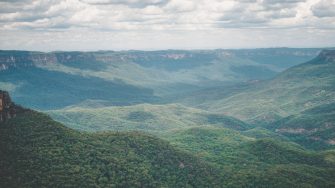
Synopsis
While trees are clearly visible in satellite and aerial imagery, developing accurate classification algorithms that separate them from other vegetation is difficult due to spectral similarities. One approach to improve classification accuracy is to use satellite images captured over a range of dates, exploiting the seasonal differences between trees and other vegetation.
Since July 2017, data from the Sentinel-2A and 2B satellites has been captured every five days, providing dense multi-temporal multi-spectral imagery at 10m resolution. The project: ‘Mapping Tree Cover Using Multi-Temporal Sentinel-2 Satellite Imagery’ analyses this data, pre-processed by the Joint Remote Sensing Research Program using established methods that derive surface reflectance and vegetation fractional.
A suitable area of NSW containing woodland and forest, previously mapped using high-resolution airborne lidar, will be used as a case study to train and validate single date and multi-temporal tree classification models. Further work to model foliage projective cover within tree crowns may also be possible. The research will use data produced by the Joint Remote Sensing Research Program. The results will be of great interest to the NSW and QLD governments who map and monitor tree cover using satellite imagery.
Aims
This project aims to compare models of tree cover using single-date and multi-temporal Sentinel-2 satellite data for an area of NSW.
This requires learning many procedures common to remote sensing research:
- Exploration of the data to look at the separability of classes.
- Development of statistical models.
- The assessment of the resulting maps with validation data.
Get involved
To learn more about this project, contact Dr Adrian Fisher and Prof. Graciela Metternicht.
E: adrian.fisher@unsw.edu.au
T: +61 2 9385 3393
E: g.metternicht@unsw.edu.au
T: +61 2 9385 5761
